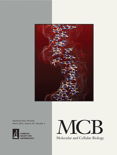
Cell Regeneration
Scope & Guideline
Empowering Breakthroughs in Cellular Development
Introduction
Aims and Scopes
- Stem Cell Biology and Regeneration:
The journal extensively covers research related to stem cells, including their differentiation, fate determination, and roles in tissue regeneration across various organisms. - Molecular Mechanisms of Regeneration:
It explores the molecular pathways and cellular interactions that facilitate regeneration, including signaling pathways like Wnt, TGF-β, and BMP, which are crucial for regenerative processes. - Modeling and Engineering in Regenerative Medicine:
The journal emphasizes the development of organoids and in vitro models to study regeneration, providing innovative platforms for drug testing and disease modeling. - Impact of Environmental Factors on Regeneration:
Research on how external factors such as mechanical stress, chemical environments, and cellular niches influence regenerative capacities and stem cell behavior is a core area of focus. - Translational Applications and Therapeutics:
The journal highlights studies that bridge basic research with clinical applications, aiming to develop regenerative therapies for various diseases, including cardiac, neurological, and metabolic disorders.
Trending and Emerging
- Cellular Reprogramming and Induced Pluripotency:
There is a rising interest in cellular reprogramming technologies, particularly in generating specific cell types from pluripotent stem cells for therapeutic applications, as demonstrated by recent studies on cardiac and hematopoietic cells. - Organoid Technology and Applications:
The development and application of organoids for studying human diseases, drug discovery, and regenerative processes is rapidly gaining momentum, highlighting their potential as powerful research tools. - Intercellular Communication in Regeneration:
Emerging research focuses on the signaling pathways and mechanisms of communication between different cell types during regeneration, emphasizing their roles in coordinating regenerative responses. - Impact of Aging on Regenerative Capacity:
Studies examining the effects of aging on stem cell function and tissue regeneration are increasingly prevalent, reflecting a growing recognition of the challenges posed by aging in regenerative medicine. - Therapeutic Strategies Targeting Inflammation and Immune Modulation:
There is an emerging trend towards exploring the roles of inflammation and immune responses in regeneration, with studies investigating therapeutic strategies to enhance regenerative outcomes through immune modulation.
Declining or Waning
- Traditional Models of Regeneration:
Research utilizing classical model organisms for studying regeneration has become less prominent, as newer technologies and models such as organoids and CRISPR/Cas9 gene editing gain traction. - Single-Cell Analysis in Non-Stem Cell Contexts:
While single-cell transcriptomics remains a hot topic, its application in contexts outside stem cell research has diminished, suggesting a more focused interest in stem cell-specific inquiries. - Static In Vitro Cultures:
There is a noticeable decline in studies relying on traditional static in vitro culture systems for regeneration research, as dynamic and more physiologically relevant models are increasingly preferred. - Basic Mechanistic Studies:
Research that solely emphasizes basic mechanistic insights without translational implications appears to be waning, as there is a growing demand for studies that connect basic science with clinical outcomes.
Similar Journals

JOURNAL OF CELLULAR PHYSIOLOGY
Illuminating the Pathway of Life at the Cellular LevelJOURNAL OF CELLULAR PHYSIOLOGY, published by Wiley, is a leading peer-reviewed journal that has been at the forefront of cellular research since its inception in 1945. With its prestigious Q1 and Q2 rankings in the fields of Clinical Biochemistry and Cell Biology, this journal is highly regarded within the scientific community, reflecting its significant impact factor and rigorous peer-review process. Addressing the intricacies of cell function and physiology, it serves as a crucial resource for researchers, professionals, and students dedicated to advancing knowledge in the life sciences. The journal publishes cutting-edge research articles, integral reviews, and significant findings that bridge basic biology and clinical applications, ensuring access to high-quality scholarly content that informs current practices and future research directions. Although not open access, the journal maintains a rich archive of studies, making it an essential reference point for those invested in the health and biological sciences.

BMC Molecular and Cell Biology
Bridging knowledge gaps in the biological sciences.BMC Molecular and Cell Biology is a forward-thinking open-access journal published by BMC, specializing in the vital fields of molecular biology and cell biology. Since its inception in 2019, the journal has carved a niche for itself, ranking in the Q3 quartile in both Cell Biology and Molecular Biology categories as of 2023. With an ISSN of N/A and an E-ISSN of 2661-8850, the journal provides a platform for groundbreaking research, high-quality reviews, and innovative methodologies. Situated in the United Kingdom, BMC Molecular and Cell Biology promotes a diverse range of studies, addressing fundamental questions in biology that resonate with both experts and new researchers alike. The journal's commitment to open access ensures that valuable findings are readily available to the global scientific community, fostering collaboration and knowledge-sharing across disciplines. Researchers aiming to contribute to the field of cell and molecular biology will find this journal an indispensable resource for both publishing and staying informed on the latest advances.

INTERNATIONAL JOURNAL OF EXPERIMENTAL PATHOLOGY
Shaping the Future of Experimental PathologyINTERNATIONAL JOURNAL OF EXPERIMENTAL PATHOLOGY, published by Wiley, is a leading peer-reviewed journal dedicated to the field of experimental pathology. With an ISSN of 0959-9673 and E-ISSN 1365-2613, the journal has been a vital resource for researchers and professionals since its inception in 1990, covering a broad spectrum of topics within pathology, cell biology, and molecular biology. The journal's relevancy is underscored by its Q2 ranking in Pathology and Forensic Medicine and Q3 rankings in both Cell Biology and Molecular Biology, as of 2023, reflecting its significant contribution to the scientific community. Although it does not currently offer open access options, readers can benefit from its insightful research articles and reviews that guide advancements in diagnostic pathology and therapeutic strategies. As the journal continues to evolve, it remains committed to facilitating the exchange of innovative ideas and findings that drive progress in experimental pathology and related fields, making it an indispensable platform for scientists, clinicians, and students alike.

Regenerative Medicine
Empowering Research in Healing and RestorationRegenerative Medicine, published by Taylor & Francis Ltd, is a pivotal journal within the field of biomedical research, focusing on the innovative advances in regenerative and restored functions in human health. With an ISSN of 1746-0751 and an E-ISSN of 1746-076X, this esteemed journal boasts a commendable impact factor within its categories, notably holding the Q2 status in Embryology and Q3 in Biomedical Engineering as of 2023. Covering a broad spectrum of topics from stem cell research to tissue engineering, it serves as a crucial platform for interdisciplinary collaboration among researchers, professionals, and students dedicated to the regeneration of tissues and organs. Given its comprehensive scope from 2006 to 2024, the journal continues to attract high-quality manuscripts that advance the frontiers of knowledge in regenerative medicine. Researchers and practitioners alike are encouraged to engage with the latest findings and methodologies disseminated in this vital publication.

Cellular and Molecular Bioengineering
Exploring Cellular Dynamics Through Molecular InsightsCellular and Molecular Bioengineering, published by SPRINGER, is a prominent journal dedicated to the exploration of interdisciplinary approaches in the fields of biochemistry, genetics, and molecular biology. With an ISSN of 1865-5025 and an E-ISSN of 1865-5033, this journal has been a pivotal resource since its inception in 2009, showcasing groundbreaking research that combines innovative modeling and simulation techniques with cellular and molecular applications. As a Q2 journal in both Biochemistry, Genetics and Molecular Biology (miscellaneous) and Modeling and Simulation categories, it ranks favorably in the Scopus metrics, placing 62nd out of 324 in Mathematics_ Modeling and Simulation, and 69th out of 221 in General Biochemistry, Genetics and Molecular Biology. The journal's commitment to quality research and its contribution to advancing academic dialogue make it essential for researchers, professionals, and students seeking to stay at the forefront of bioengineering innovation. While it currently does not offer open access, it continues to provide significant insights and empirical studies that can help shape future developments in the field, reinforcing its role as a key player in cellular and molecular bioengineering.

DEVELOPMENTAL CELL
Unveiling Molecular Mechanisms of LifeDEVELOPMENTAL CELL, published by CELL PRESS, stands as a premier journal in the fields of Biochemistry, Genetics and Molecular Biology, Cell Biology, and Developmental Biology. With a significant influence evidenced by its Q1 rankings across several categories in 2023 and a remarkable Scopus ranking placing it at the 98th percentile for Developmental Biology, this journal is pivotal for researchers and academics aiming to advance their understanding of cellular processes. Covering a broad range of topics from molecular mechanisms to cellular developmental pathways, DEVELOPMENTAL CELL publishes cutting-edge research articles that contribute to the dynamic landscape of cell biology and related disciplines. Although it does not currently offer open access, the journal is accessible through institutional subscriptions, reinforcing its commitment to disseminating high-quality scientific knowledge produced by leading experts in the field. Based in the United States, DEVELOPMENTAL CELL continues to push the boundaries of discovery and innovation in life sciences, making it an essential resource for professionals, researchers, and students alike in the quest for foundational biological insights.

Journal of Developmental Biology
Empowering the Future of Developmental ResearchJournal of Developmental Biology, published by MDPI, is an esteemed open access journal that has been contributing to the field since its inception in 2013. With a focus on developmental processes across various biological systems, this journal serves as a vital platform for disseminating cutting-edge research and fostering dialogue among experts in the fields of Cell Biology, Developmental Biology, and Molecular Biology. The journal currently holds a commendable Q2 ranking in both Developmental Biology and Molecular Biology, underscoring its significance in advancing knowledge within these domains. Operating out of Switzerland, and featuring an engaging array of articles, the journal prioritizes accessibility through its Open Access model, further expanding the reach of vital research findings. Whether you are a seasoned researcher or an enthusiastic student, the Journal of Developmental Biology provides an essential resource for the latest insights and developments in this rapidly evolving field.

DEVELOPMENTAL BIOLOGY
Exploring Cellular Journeys in DevelopmentDEVELOPMENTAL BIOLOGY, published by Academic Press Inc., Elsevier Science, stands as a pivotal journal in the fields of cell biology, developmental biology, and molecular biology since its inception in 1959. Renowned for its rigorous peer-review process, this journal serves as a platform for publishing cutting-edge research, reviews, and insights that drive forward our understanding of developmental processes at the cellular and molecular levels. With an impressive track record, it is classified in the Q2 quartile across multiple categories, reflecting its significant impact and relevance in academia and research communities. Although the journal does not provide Open Access options, it remains accessible via numerous academic databases, ensuring a wide reach for researchers, professionals, and students alike. With a commitment to advancing the field, DEVELOPMENTAL BIOLOGY continues to be essential reading for those looking to stay at the forefront of developmental research and its applications.

CELL DEATH AND DIFFERENTIATION
Fostering Innovation in the Science of Cell Death and DifferentiationCELL DEATH AND DIFFERENTIATION, published by SpringerNature, is a leading peer-reviewed journal that has been at the forefront of advancing knowledge in the fields of cell biology and molecular biology since its inception in 1994. With an impressive impact factor and ranking in the Q1 quartile for both categories as of 2023, it is recognized as an essential resource for researchers and professionals dedicated to understanding the intricate processes of cellular death and differentiation. The journal publishes high-quality original research articles, reviews, and commentaries, fostering an interdisciplinary dialogue among scientists exploring the molecular mechanisms that underpin these fundamental biological processes. With its commitment to excellence, CEL DEATH AND DIFFERENTIATION bridges gaps in knowledge and stimulates innovation within the scientific community. To access cutting-edge research from this prestigious journal, you may visit their website for subscription options and explore a wealth of knowledge that is crucial for advancing the frontiers of biological research.

MOLECULAR AND CELLULAR BIOLOGY
Driving Innovation in Molecular and Cellular ScienceMOLECULAR AND CELLULAR BIOLOGY, published by TAYLOR & FRANCIS INC, stands as a preeminent platform for researchers, professionals, and students engaged in the dynamic field of molecular and cellular biology. Established in 1981 and ongoing into 2024, the journal features cutting-edge research that spans across vital sub-disciplines, garnering a strong impact in its contributions to the scientific community. With an impressive Q2 ranking in Cell Biology and Q1 ranking in Molecular Biology for 2023, it consistently publishes high-quality articles that reflect the latest advancements and discoveries within the field. The journal is particularly well-regarded for its rigorous peer-review process and commitment to scientific excellence, making it an invaluable resource for those seeking to deepen their understanding of molecular mechanisms and cellular processes. Although not open access, the journal offers diverse access options for researchers to reach the latest findings. By maintaining a strong focus on biochemistry, genetics, and molecular biology, MOLECULAR AND CELLULAR BIOLOGY remains essential reading for anyone looking to contribute to or stay informed about significant developments within this pivotal area of study.